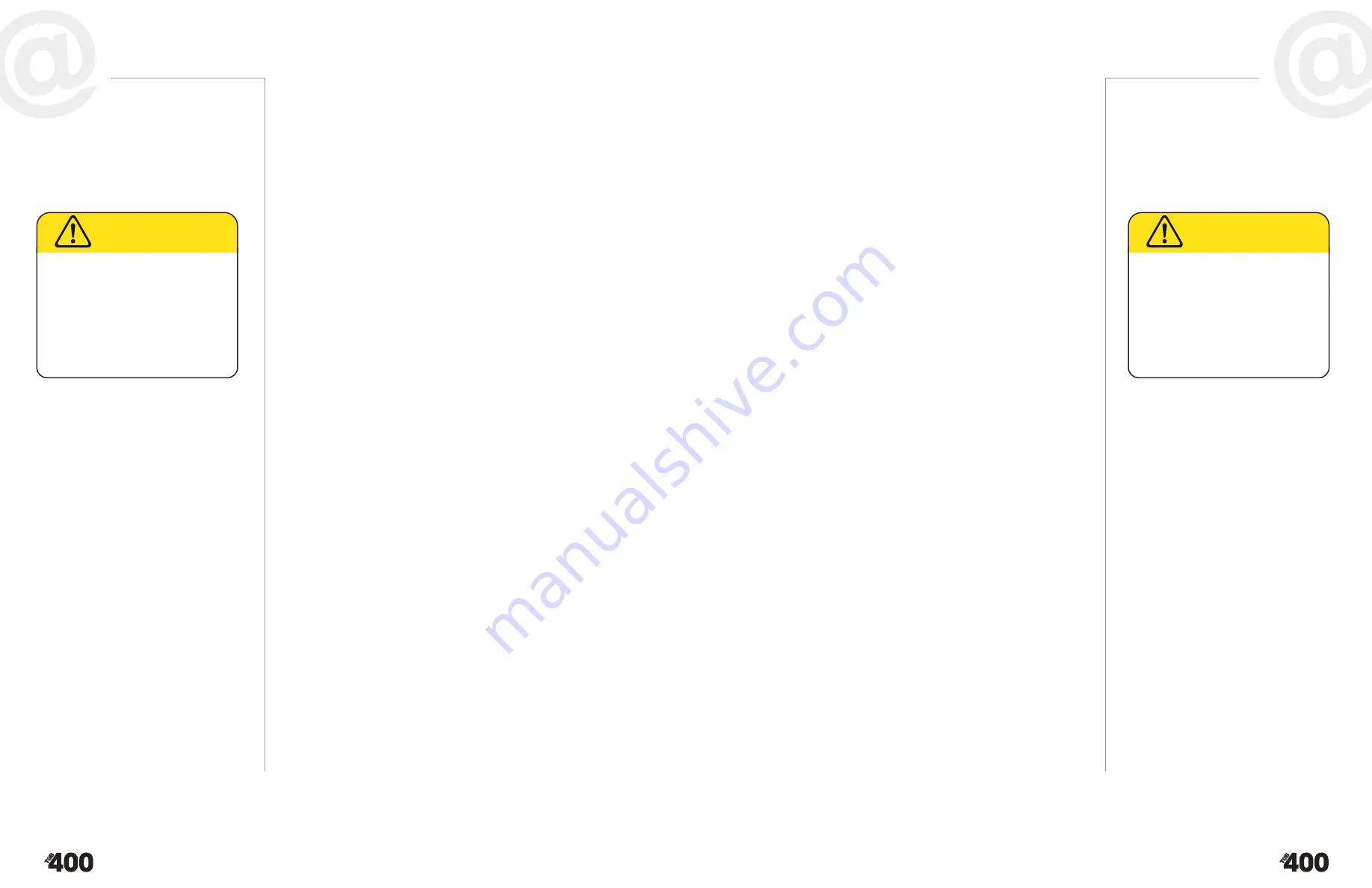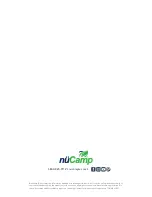
Teardrop Campers • nucamprv.com
52
nucamprv.com • Teardrop Campers
53
MAINTENANCE
CLEANING CARE
Frequent maintenance and cleaning of your camper will contribute to the
dependability, reliability, aesthetics and value of your unit.
Interior Cleaning:
Cabinetry & Finished Wood Products.
Remove dust with a damp, clean
cloth. Apply a quality furniture polish and buff with a soft dry cloth. DO
NOT use ammonia-based products or silicone oils. Avoid extended
periods of direct sunlight, high temperatures or high humidity exposures
to finished wood products. Warping and finish degradation results from
these exposures.
Laminated Tops.
Use a soft cloth, mild dishwashing liquid and warm water.
Dry with a soft linen cloth. DO NOT use steel wool, scouring pads or
abrasive cleaners.
Walls & Paneling.
Most surfaces can be cleaned with a soft sponge or
cloth with mild liquid detergent in warm water. DO NOT use abrasive
cleaners that scratch and mar the surface. Large amounts of water may
saturate the material.
Floors.
Periodically vacuum or sweep vinyl flooring to remove dirt. Once
debris is removed, use a damp mop with water and a mild cleaner. DO
NOT soak the flooring.
Shower Walls & Base.
For routine cleaning use a mild dish soap and
water to clean the walls and base of the shower. DO NOT use harsh
detergents, abrasive cleaners, steel wool or razor blades as it will scratch
or mar the surfaces.
Stainless Steel Sink.
Use a glass cleaner or cleaner made specifically for
stainless steel. DO NOT use steel wool, scouring pads or abrasive cleaners.
Wipe with a damp soft cloth or sponge in warm water mixed with mild dish
soap. Blot dry the surface with a towel to prevent water spots.
Vinyl Components.
Do not dry-clean. This can cause shrinking and
cracking. It should be cleaned by a qualified professional. If a spill occurs,
do not rub it in, but rather blot it up.
Curtains, Blinds, Shades.
Dust frequently with a soft brush-tipped vacuum
or dust wand. Have them professionally cleaned once a year.
Cleaning Agents.
Check with the component manufacturer or ask your
dealer for brand recommendations. If you are unsure if a detergent will
work, test it in a small inconspicuous area before using in open areas.
Component Manufacturer.
The best cleaning instructions for any surface
are obtained from the component manufacturer. If you are unsure about a
cleaning product, consult the manufacturer whether it is safe to use on that
item or surface.
Exterior Cleaning:
Road Debris.
The exterior of your camper is comprised of many different
materials including fiberglass, metal, rubber, plastics, aluminum, glass and
sealant. Road debris from traveling may accumulate on these materials and
result in corrosion, staining, or chemical spotting. Frequent washings of the
exterior will help protect from damage
Salt Water.
Salt water is highly corrosive. When towing in snowy areas
in winter, especially where salt is used on roads, spray off the camper
after every trip to remove corrosive salt. When traveling by oceans, avoid
parking near salt water spray. The air near ocean shores is often laden with
salt water. Wash your camper more frequently to reduce corrosion and
wear.
Sunlight.
Avoid washing the camper in direct sunlight. A shaded area is the
best environment to wash your camper.
Water Drainage.
It may be helpful to jack up the front of the camper
slightly when spraying the camper so water trapped on the roof can drain
off the rear.
Washing Frequency.
Wash your camper at least once a month. The roof
should be cleaned every other month or as debris accumulation demands.
Cleaning Agents.
A cleaning solution of mild liquid detergent and water
with a pH range 3 to 11 and free of strong solvents, alcohol or other
flammable liquid is ideal for most components. Check with the component
manufacturer or ask your dealer for recommendations on brands. If you are
unsure if a detergent will work, test it in a small inconspicuous area before
using in open areas.
Washing.
Spray the camper thoroughly from top to bottom with water.
Then, using a sponge or car washing mitt, handwash the camper from top
to bottom. Once done, rinse thoroughly and wipe dry with a soft linen
cloth. Never use abrasive cleaners.
Graphics.
Clean with the rest of the trailer. Test detergent solutions on
inconspicuous areas before using on large areas.
High Pressure Spray.
Use extreme caution when using any type of
pressure sprayer around attachments, doors, windows, and appliance
vents. Make sure to keep the washing nozzle about 16 inches or more away
from the RV and hold the nozzle at right angles when washing around
doors, vents and window areas. Be very careful when cleaning graphics.
Never direct the spray nozzle towards edges of graphics. DO NOT use
automatic car washes.
Never use liquids such as lacquer thinner,
nail polish remover, gasoline or other
flammable compounds to clean your
camper. Do not use abrasive materials
to clean finished wood, plastic, vinyl,
metals, glass, rubber or laminated
surfaces. Damage will occur and your
warranty may be voided.
CAUTION
There are some types of washing
equipment that can apply heat and high
pressure to your RV. Excessive heat can
cause distortion and excessive pressure
can possibly flood the RV’s interior.
Avoid using hot water with high pressure
washing. Damage will occur and your
warranty may be voided.
CAUTION









































